What is your favourite filling when it comes to local snacks such as ang ku kueh, sesame ball, and bao buns? Mine has always been the mung bean paste made of green beans 綠豆., also known as mung beans (another favourite dessert soup is the green bean soup). My mummy will always cook green bean soup when we were growing up as it’s a good source of fibre, protein and vitamins, as well as very ‘cooling’ for our hot and humid weather in Singapore.
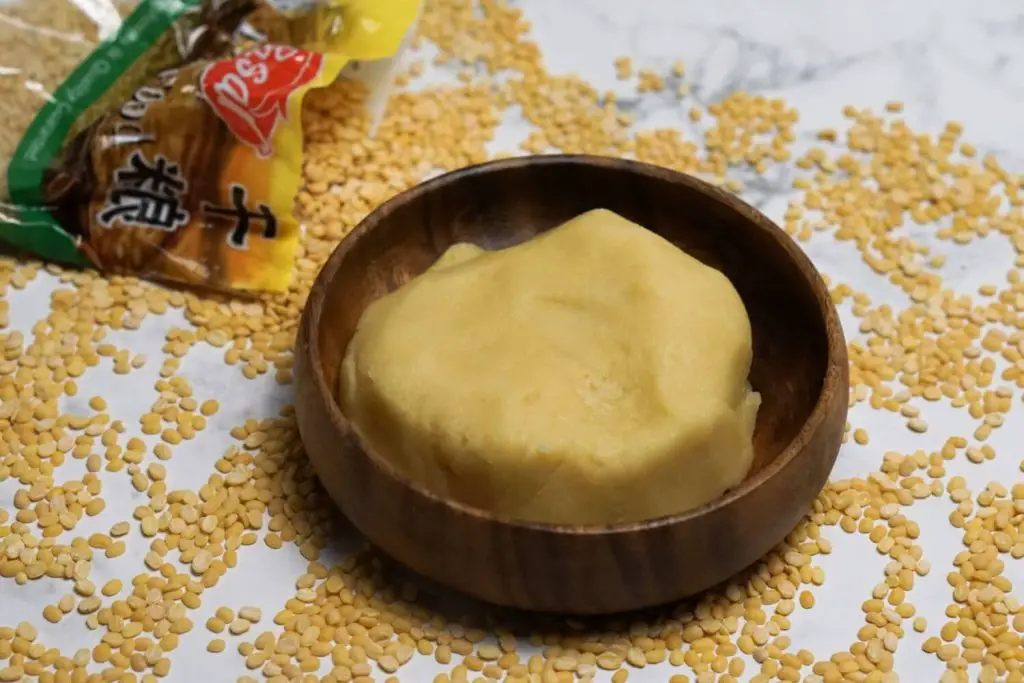
In this recipe, I’m making the sweet version, using ZestyLeaf Monk Fruit Sweetener which is a 1:1 cane sugar replacement, thus making it sugar-free. This Monk Fruit Sweetener is zero calorie, keto and diabetic friendly, zero glycemic index (GI). You can of course make the savoury version, by increasing the salt amount and reducing the sugar amount as well as adding fried shallot oil.
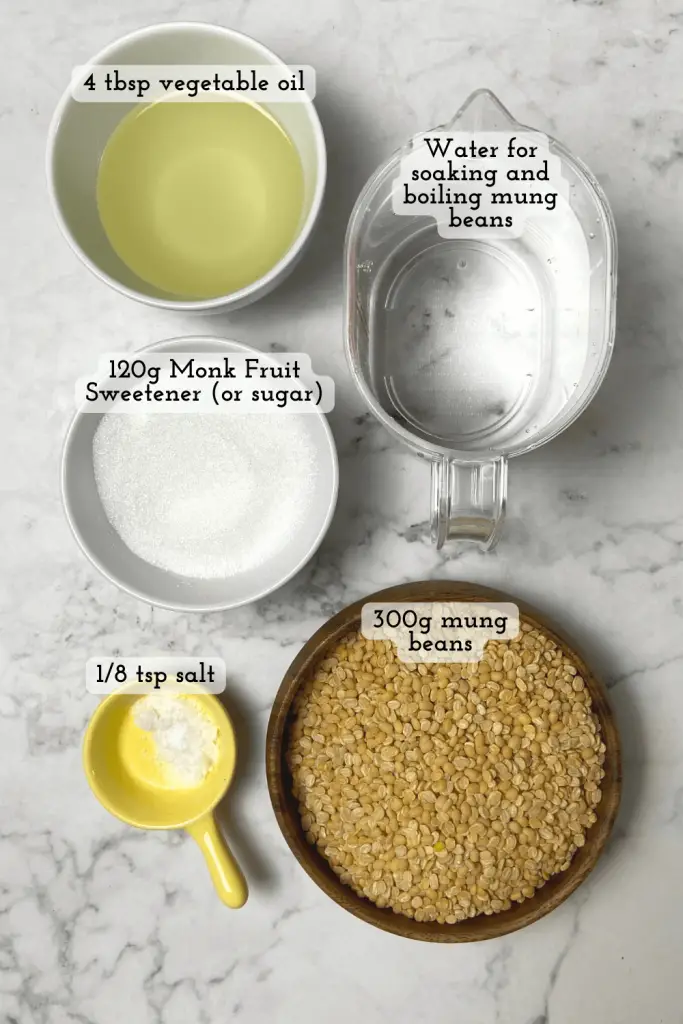
Recipes using the mung bean paste filling
I’ve used this homemade sugar-free paste to make jian dui, also known as sugar-free Chinese crispy sesame balls, sugar-free ang ku kueh, and mooncakes.
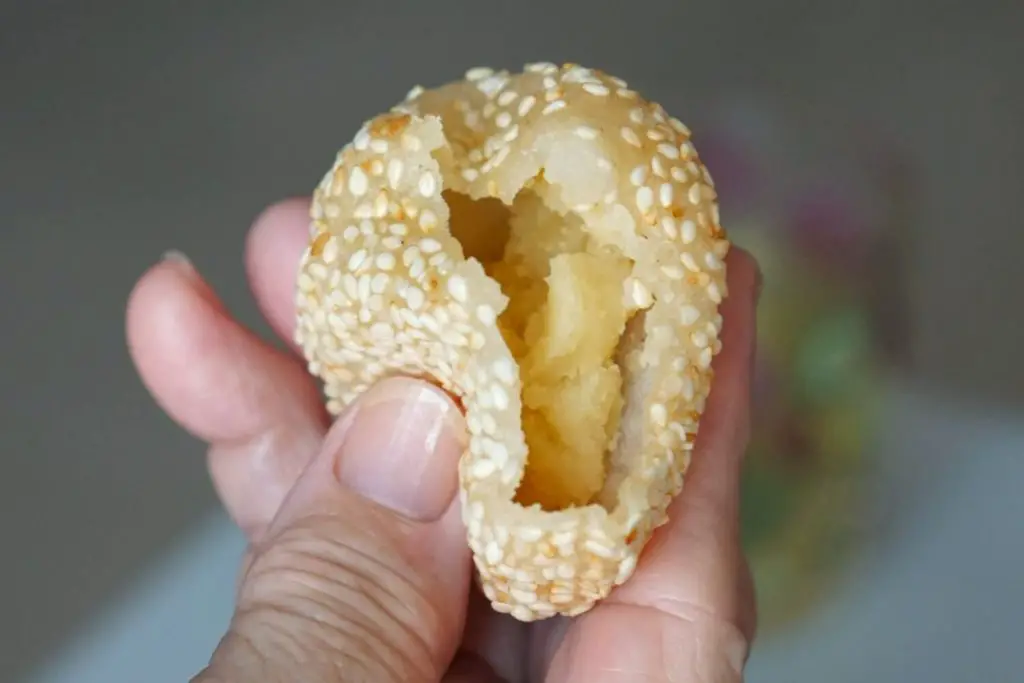
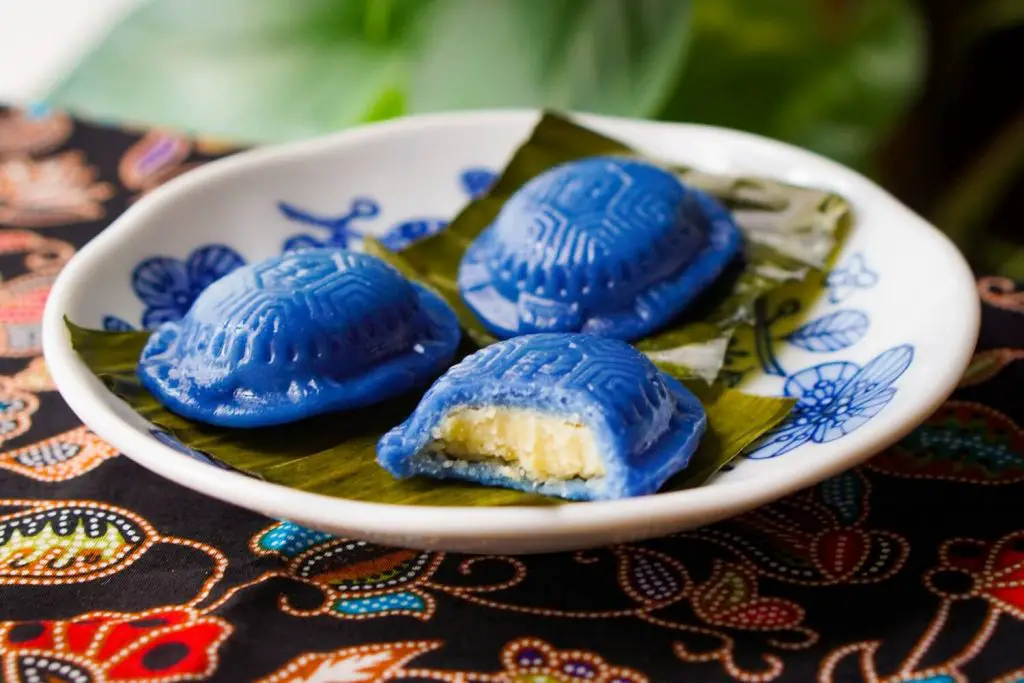
Tips on making this sugar-free mung bean paste
- Use split mung bean (yellow without the green skin) instead of the whole green beans that come with the green skin. Removing the green skin on your own is no joke and takes a very long time! The split mung beans are available in the dry goods section of the supermarket or any grocery stores. These split mung beans are a typical ingredient used in Indian cooking such as green gram dal (green bean curry).
- Soak the mung beans for at least 4 hours. I simply wash the beans about 5-6 times until the water runs clear. Then soak it overnight before going to bed. If you are preparing it on the same day, you can also soak it in very hot water for at least 2 hours.
- After soaking, the beans will expand in size. You can either steam or boil the mung beans until they are soft and easily mashable with a fork. Sometimes I test the softness by biting a teaspoon of it.
- Mash the softened beans in a food processor until it’s in the pureed form.
- In this recipe, I used about 60g of the sweetener. You can increase the sugar level according to your preference.
- The whole cooking of the paste took me about 15 minutes. I used a wide non-stick pan and I think that really helps speed up the cooking process.
- You can make the savoury version of the mung bean paste by increasing the salt amount and reducing the sugar amount as well as adding fried shallot oil.
- I stored the paste in an airtight container in the fridge and it’s good up to 2 weeks. It does turn dry after long time in the fridge, so adding some oil to the paste will help to smoothen it out. Adding oil is optional. If not, the mung bean paste is also good as it is.
Check out other paste filling recipes
Check out my other paste filling recipes, many of these are made with Monk fruit or Stevia sweetener, making them a healthier snack version from the original recipe:
- 2-Ingredient Peanut Paste Filling for Ang Ku Kueh 自制花生馅
- Pandan Coconut Filling for Nonya Kueh and Breads 香兰炒椰丝
- Chestnut Paste 甘栗馅
Watch how to make on YouTube
Pin now, cook later
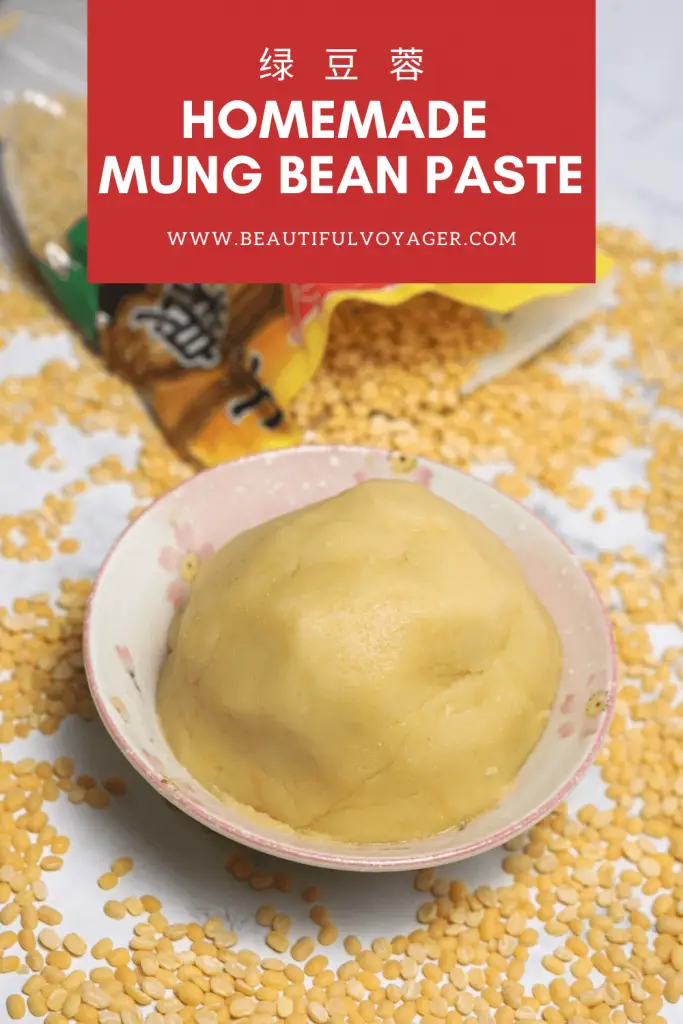
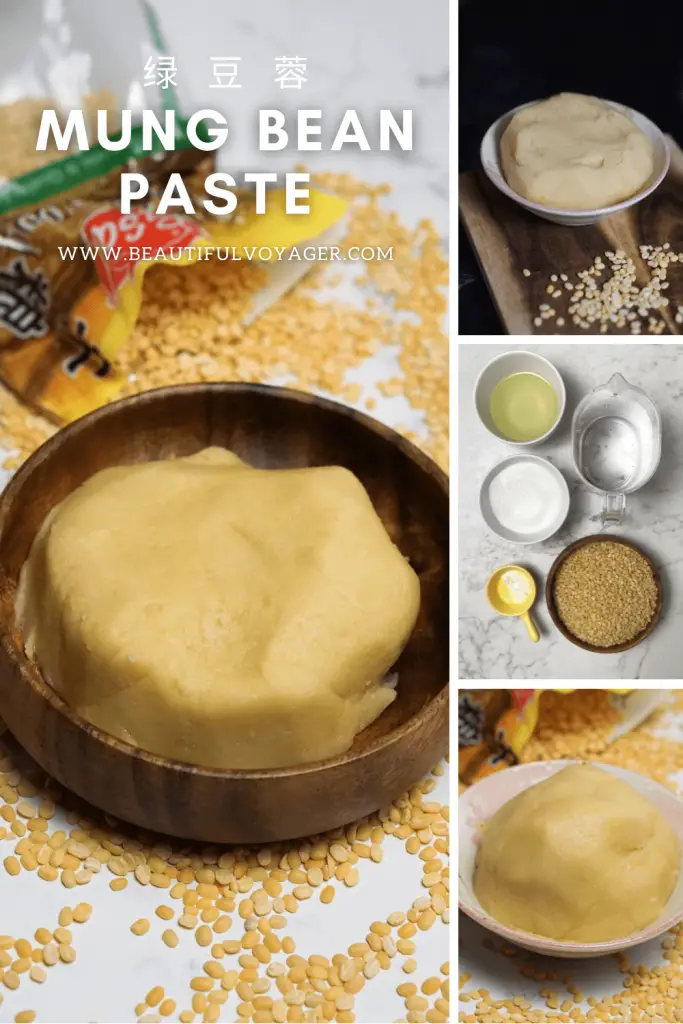
Mung Bean Paste Filling (Sugar-Free) 无糖绿豆蓉
Ingredients
- 300 g split yellow mung beans
- Water for soaking and boiling mung beans
- 60-120 g monk fruit sweetener or sugar, season to taste
- 4 tbsp vegetable oil I used light olive oil
- ½ tsp salt
Instructions
- Rinse the split mung beans with water 4-5 times until the water turns clear. Drain off the water. Remove any beans that floats to the top.300 g split yellow mung beans
- Soak the mung beans in water, covered with lid, for at least 4 hours or overnight. Make sure the water is above the mung bean level by at least an inch and the mung beans will expand in size after soaking. Note: Alternatively you can soak in hot water for 2 hours.300 g split yellow mung beans, Water for soaking and boiling mung beans
- Drain off and discard the soaking water.
- Transfer soaked mung beans to a pot and add water to cover the mung beans fully with at least 1.5 inch above the mung bean level. Cover with lid and bring to boil over high heat.
- Once boiled, reduce to simmer over low heat with lid slightly open for about 45 minutes or until the beans can be easily mashed with a fork (can also try biting it). Drain off water.
- Use a food processor to grind the mung beans into a purée.
- Transfer the puréed mung beans to a large non-stick pan. Add monk fruit sweetener (or sugar), salt, vegetable oil, and keep stirring over medium low heat until the mixture dries up. Moisture will reduce and become a non-sticky and paste-like dough. Do a taste test and add sugar according to your preference. If the paste appears too dry, add a bit more oil.60-120 g monk fruit sweetener, 4 tbsp vegetable oil, 1/2 tsp salt
- Once the mixture does not stick to the pan and it lifts easily without flowing down like a liquid, the mung bean paste is done. It takes about 15 min to reach the paste texture.
- Let the mung bean paste cool down completely before storing or using it. The paste will thicken more after it cools down. Store in an airtight container in the fridge for up to two weeks or in the freezer for up to one month.Optional: If the paste turns dry after keeping in the fridge, add some oil to it.

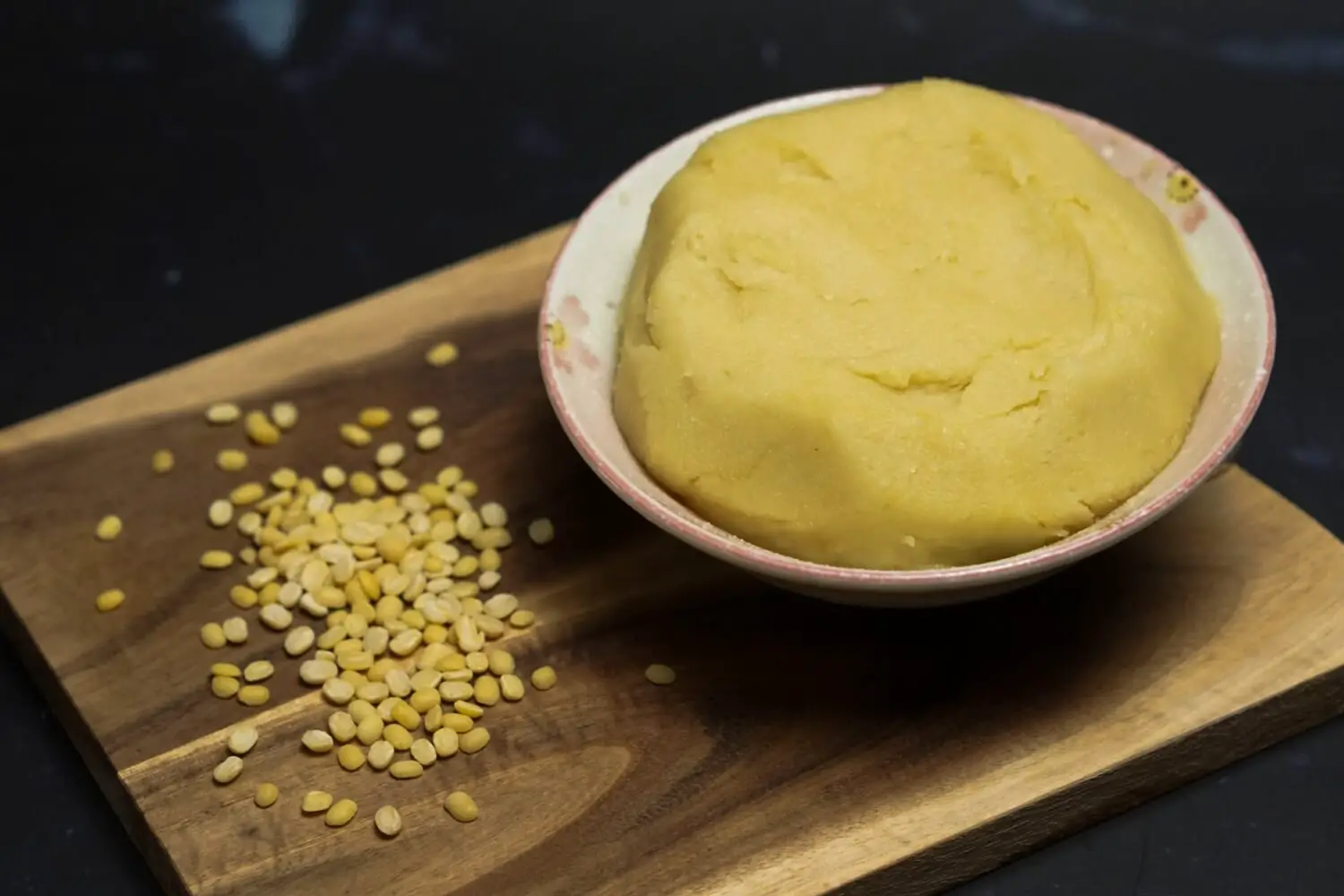
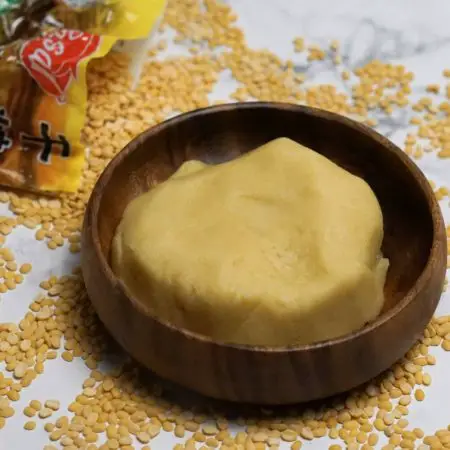


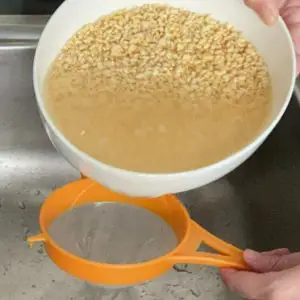

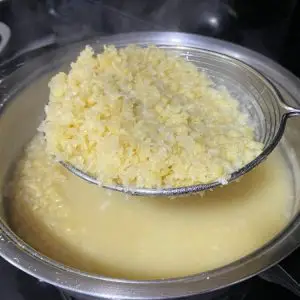


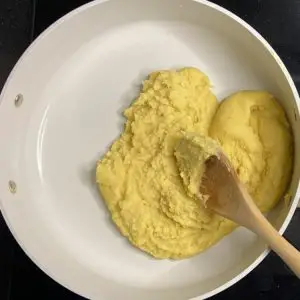
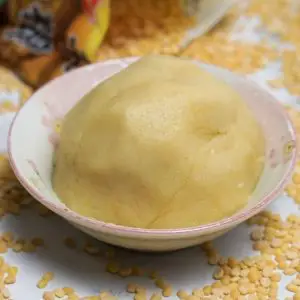
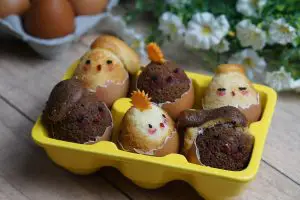 Easter Egg Cake - How to Make Cutie Chicks
Easter Egg Cake - How to Make Cutie Chicks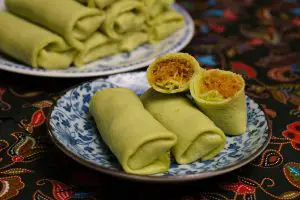 Dadar Gulung - Nonya Kueh Dadar - 香兰椰丝卷
Dadar Gulung - Nonya Kueh Dadar - 香兰椰丝卷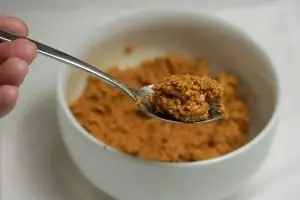
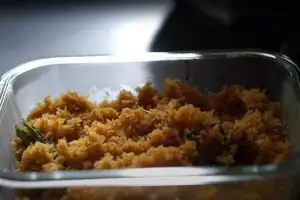
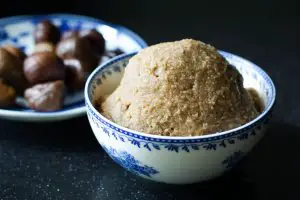


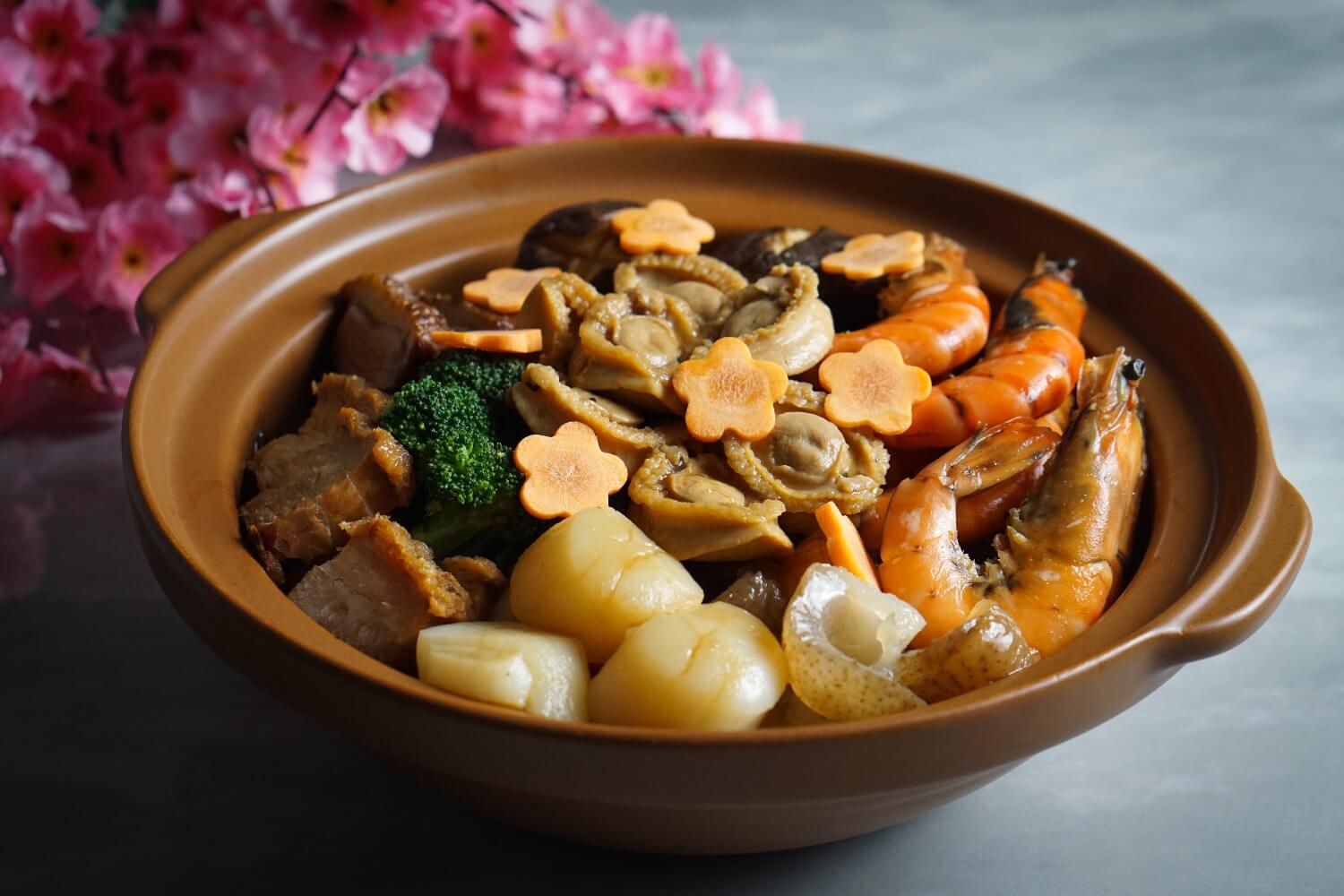
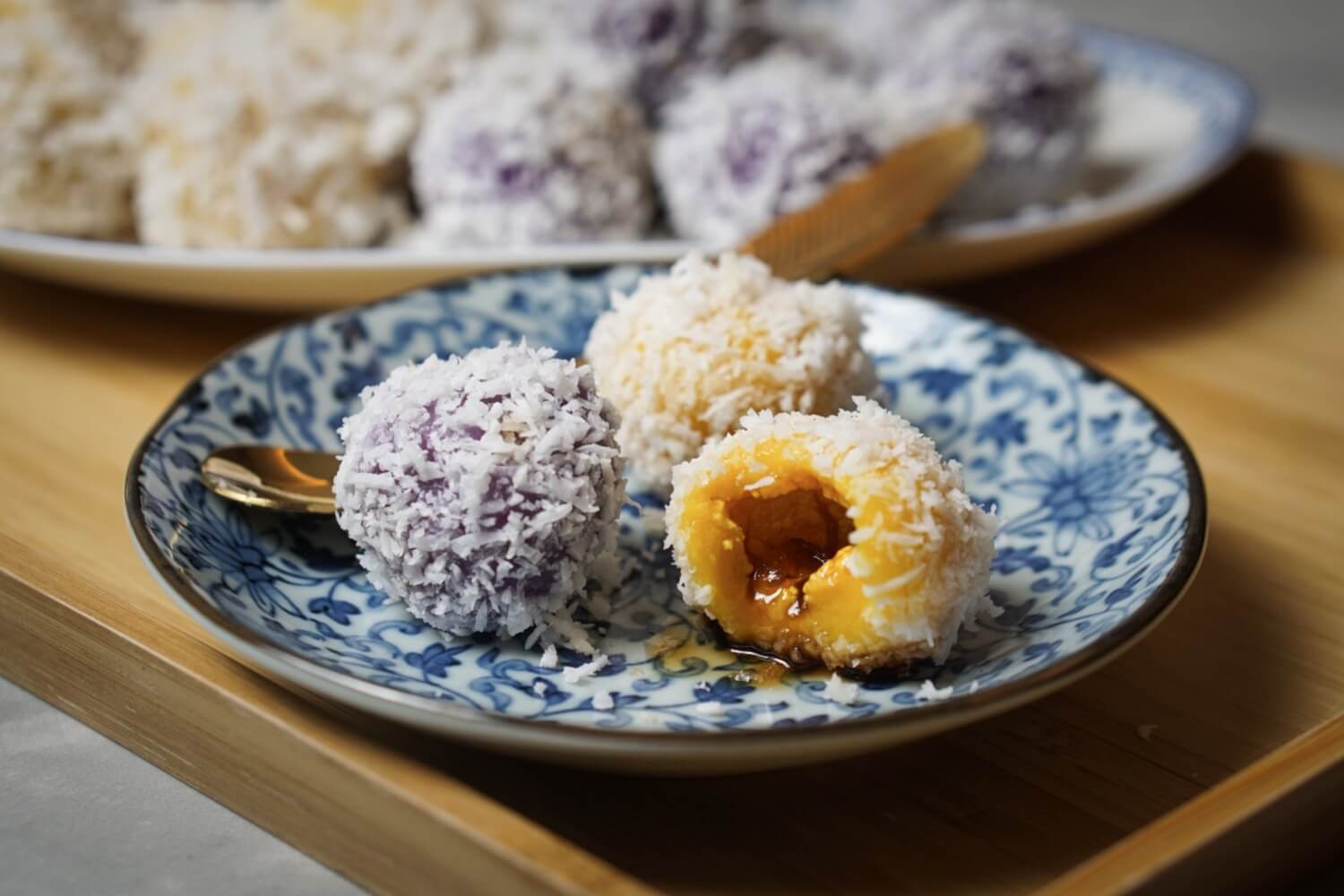
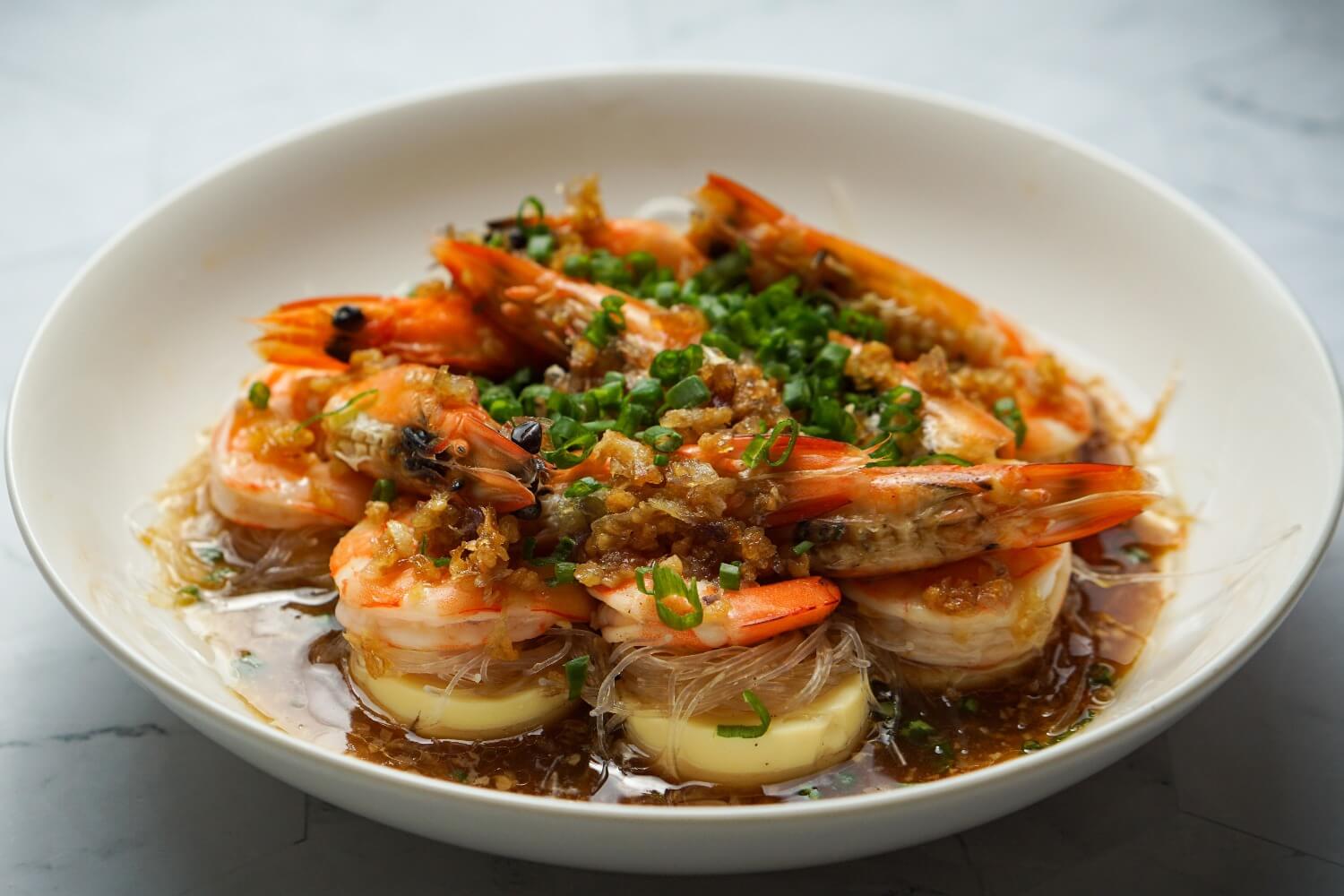



18 May 2022 at 12:23 pmEasy recipe to follow. Thanks for sharing!
18 May 2022 at 3:24 pmThanks for visiting!